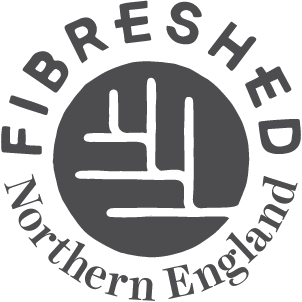The term “humility” comes from the Latin word humilitas, a noun related to the adjective humilis, which may be translated as “humble”, but also as “grounded”, or “from the earth”, since it derives from humus (earth).*

Seed to Harvest
It’s just over 100 days since we planted our flax and woad seeds at the Homegrown Homespun project in Blackburn and we’re approaching our first harvest. Although we’re just entering a new phase in this ‘farm to fashion’ process, it feels like a good time to document the life cycles of these plants, the challenges we’ve encountered and how we’ve responded to this experiential learning so far.
We entered into this project knowing we faced key obstacles; a lack of linen processing facilities in the U.K., natural dyeing being predominantly at an artisan level so limiting its use commercially, and how to implement carbon farming principals as novices.
We were deliberately ambitious by aspiring to grow a pair of jeans so we could honestly document our successes and learning opportunities (what some may call ‘failures’!) By doing so, we hope to raise awareness of socially and environmentally harmful economic and political systems that make it cheap and easy to produce fossil fashion but expensive and difficult to make ethical, sustainable clothing.
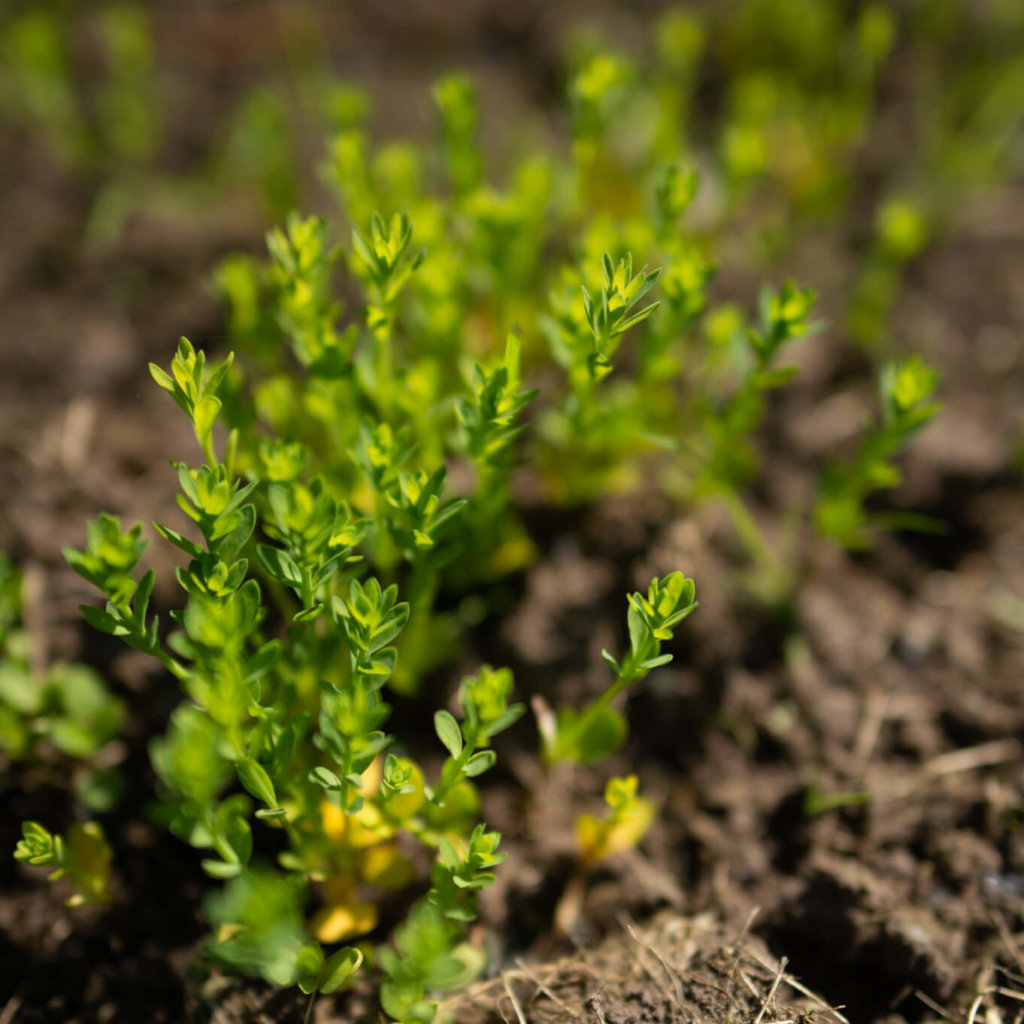
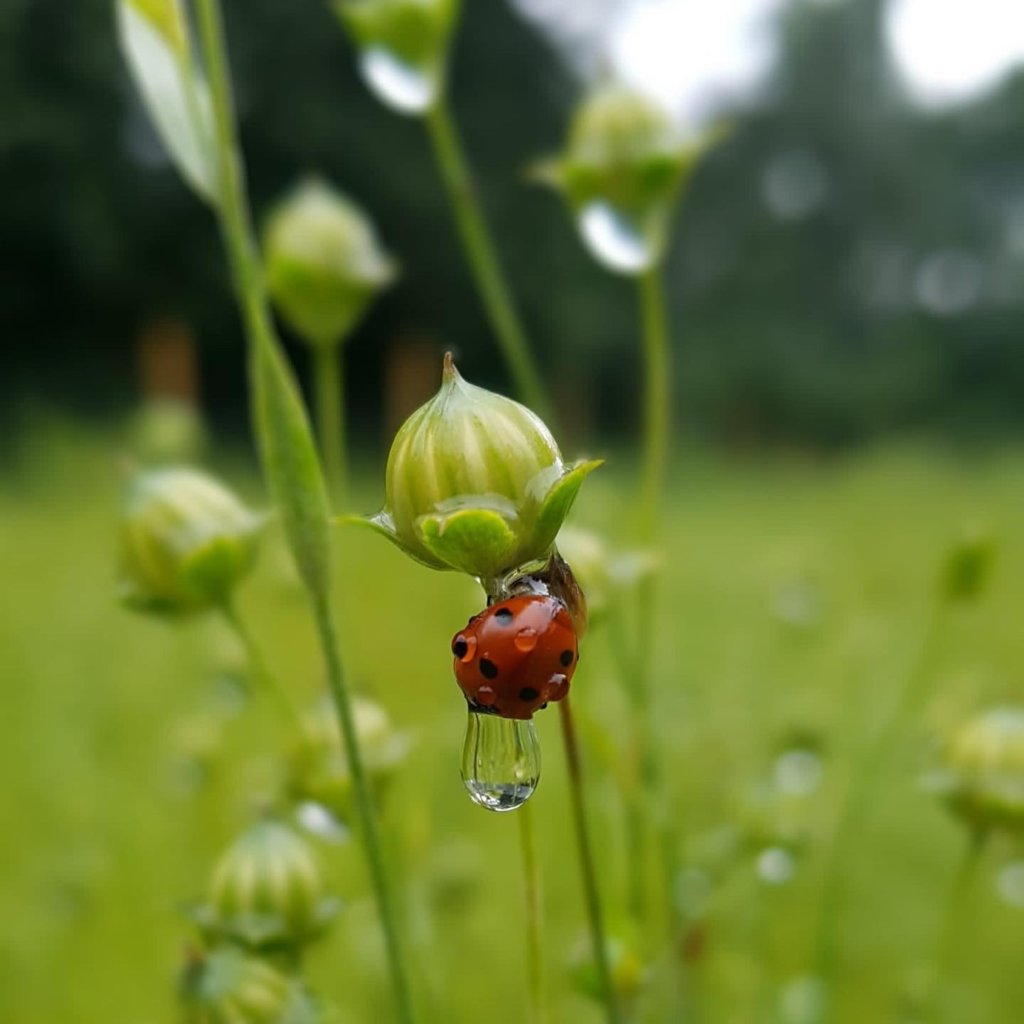
Our flax crops at both Blackburn and Monkley Ghyll Farm have been a delight to witness through their short lifespan. Planted without any chemical inputs, with just a plough, a vintage seed drill, people power and no watering, flax really lives up to its name Linum usitatissimum – meaning most useful, and we could add resilient and low maintenance.
Our ancestors were old friends with flax. Grown since time immemorial, yet since forgotten by the U.K. as a commercial crop, this is a sort of homecoming for the plant allies generations before us relied upon for clothing. As with the pre-industrial textile crafts we shared in workshops during the summer half term, witnessing the growth of these heritage crops invoked a different era; a time when people had more time.
Flowering Flax Meditation
In light of this week’s IPCC report into climate breakdown, the planet urgently needs humanity to slow down it’s lifestyle, consumption and use of fossil fuels. Regenerative fashion is not the latest greenwash trend to perpetuate economic growth. These agricultural principals come from indigenous wisdom and require slow, nuanced, emotionally literate, systemic change. This will take time.
For this reason, and so we could fully appreciate the beauty of our crop, I put my yoga teacher’s hat on and offered a flax meditation in the field at Blackburn, on a gloriously sunny morning as the plants were reaching full bloom. We watched and listened to the crop dance on the breeze, looked closely at the delicate flowers and strong stems, then did a simple breath awareness exercise. We breathed their breath, they breathed ours and so we were connected. In July, the flax grew from ankle to waist high, flowered, formed seed bolls, then quickly began its decline so it was lovely to tune in more deeply with this transient process and take a pause from the undercurrent of climate and pandemic anxiety so many of us are feeling.
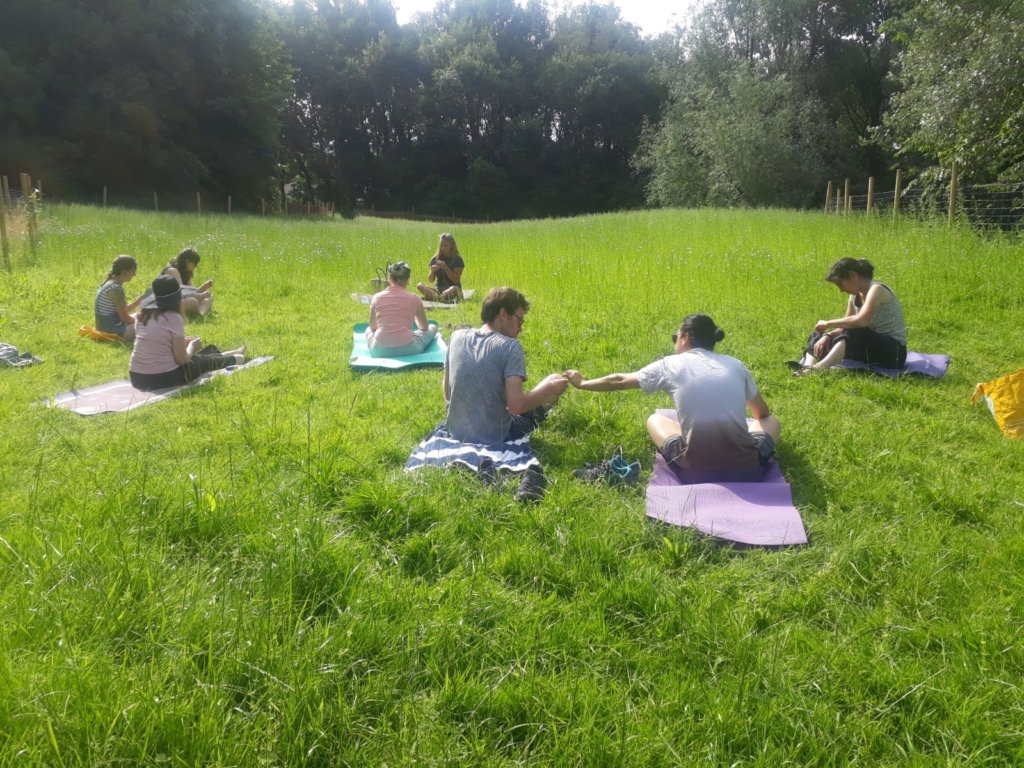
Our Humble Blue
The Blackburn woad crop on the other hand, has failed and I’m deliberately using that triggering word even though it’s not really true. Had we been growing for commercial purposes and the crop hadn’t produced the required profit on demand, it could be deemed a failure. However, we’re attempting to pioneer a regenerative ‘parallel structure’ where, as the Earth Logic plan recommends, we ‘put earth first’ within a currently broken system and are growing for educational purposes in this prototype year. We will of course need to make this project commercially viable if we’re to fulfil our aim to see an HH garment sold via Community Clothing by 2023 but for now, our lack of plants offers some great lessons that expose topical issues around herbicide and pesticide usage in agriculture. In the photo above, the grass we’re sitting on is where our woad plants should be!
In Blackburn, our seed broadcasting method wasn’t well suited to large woad silicules but in the absence of an agricultural scale drill, we improvised! Our ‘bucket on wheels’ relied upon the seeds being rolled into the ploughed land before wind and birds could get to them but our contractor arrived three days late.
In addition, it transpired that our commercial woad growing advisor used glyphosate herbicide to prepare his fields prior to planting and with only 1% of the world’s farmers being organic, he’s of course not alone. Glyphosate (a probable carcinogen) is used by the majority of farmers worldwide to increase yields and transitioning away from the easier option of chemical inputs is for many, a challenge requiring knowledge of ‘the old ways’ – indigenous farming techniques that have inspired organic, permaculture and regenerative principals.
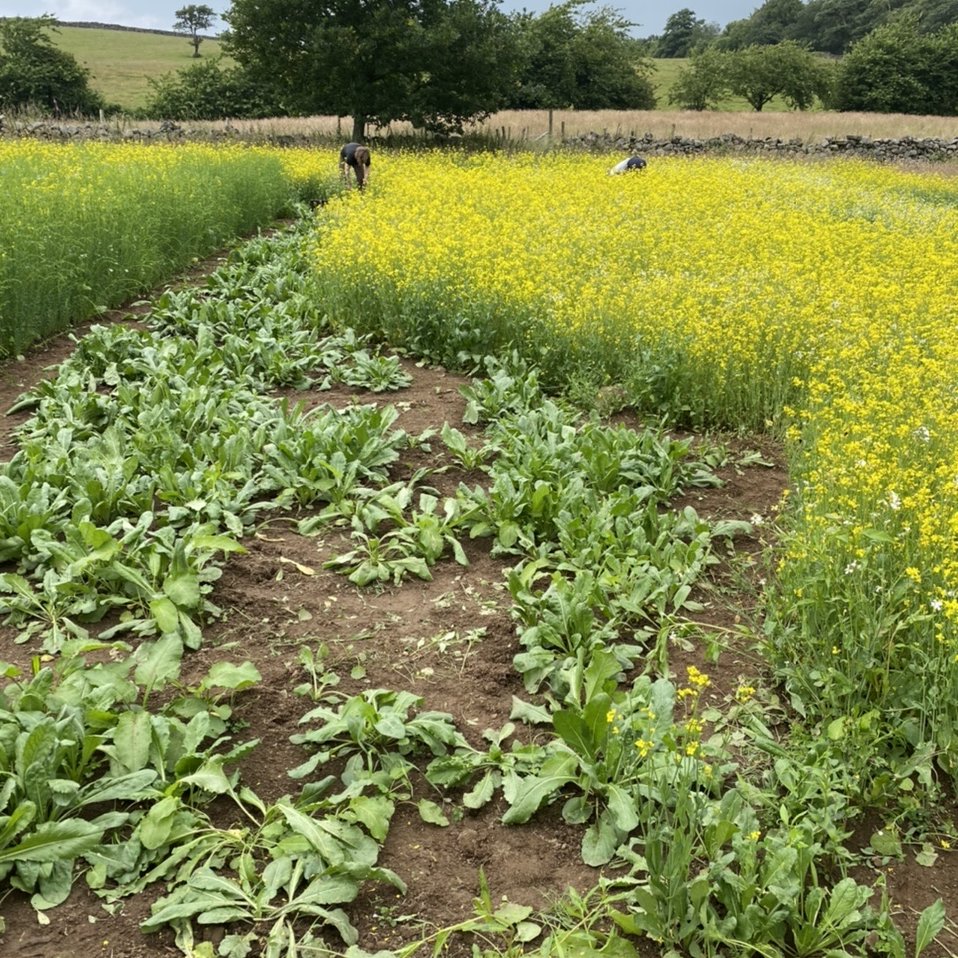
Having observed the slow germination (also due to a later/colder than usual spring) I adopted my allotment method of woad growing and transplanted some seedlings to Blackburn, so between our two sites we have enough to dye a garment as planned and will consider alternative planting and weed suppressing ideas for next season.
A Year to the Day
As we harvest both Blackburn crops this Friday, it will be almost exactly a year to the day that I shared this pictorial stream of consciousness (right) with Patrick! He had phoned the week before agreeing to a collaboration and thanks to a newly found drawing feature on my iPad, I was able to order my excited explosion of thoughts visually. I’d tentatively suggested we produce an indigo linen mending kit and he’d boldly countered that by suggesting indigo linen jeans.
I’ve been reluctant to share these musings as I later discovered that a certain political party was appropriating the word ‘indigenous’ for it’s own offensive purposes. Yet, I stand by the true essence of this word so want to share this seed of an idea that grew with Patrick and Laurie’s considerable help, into Homegrown Homespun.
Honouring Indigenous Wisdom
Fibershed understand and do great work raising awareness of the intersectionality of the environmental crisis which is inextricably linked to racial and gender bias. Founder Rebecca Burgess emphasises that Fibershed is a lot about building better relationships, both with each other via shorter supply chains and with the Earth by respectfully using only natural materials.
In the US, the presence of indigenous culture is more evident than here in the U.K. and many regions are renaming places by their pre-colonial names. This article expands upon the deep care, wisdom and intimacy with the natural environment that native land stewards have kept alive and that we now see filtering through Westernised concepts like regenerative agriculture.
Indigenous cultures make up just 5% of the world’s population yet protect more than 80% of global biodiversity – National Geographic
It’s harder to define indigeneity in this country, unless we discuss our pre-Christian, pagan culture eliminated during the Witch Trials, especially since this country then proceeded to eliminate so much of the world’s other indigenous cultures but this is a tangent beyond this post’s remit. However, common to all these philosophies is reverence for nature, so if we’re to truly implement place-based, regenerative manufacturing systems we must also drop the hierarchical, linear concept of humanity’s superiority over it’s life support system and restore a circular, holistic relationship with all forms of life.
So, instead of dictating our demands upon nature with an extractive mentality, we are responding to our environment and its lessons with the HUMility of HUMans who need to remember their place in the ecosystem. Just as the etymology of these words comes from HUMUS – soil – so we need to come home to ourselves and come back down to Earth. We need to become indigenous.

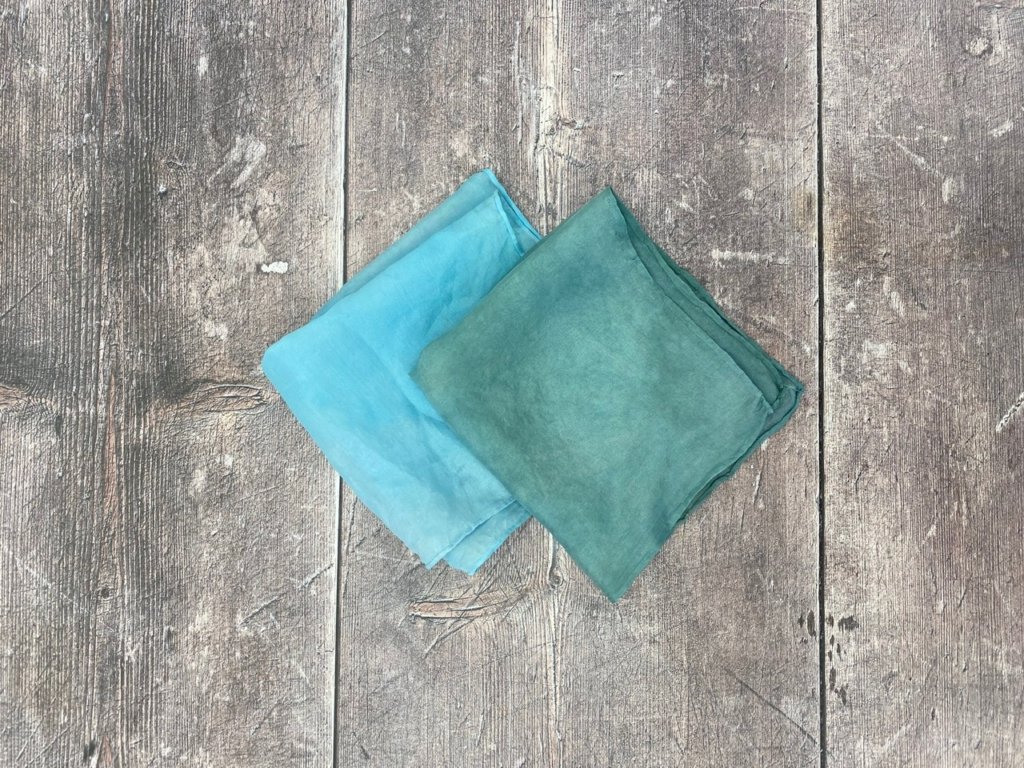
Harvest – Friday 13th August
Having spoken about respecting cultural diversity it seems only fitting that our harvest falls on a day stigmatised by some as unlucky due to it’s association with the lunar calendar and paganism. Yet in pre-Christian times, flax, spinning and weaving had it’s own Goddess, Arianrhod who I’m sure will be smiling as we tend to her plants on this auspicious day.
We’ll pull the flax up from the roots, laying it on the ground to ret, then harvest our small patch of woad. The unique shade of our Blackburn indigo can be seen in the sample above as I tested it for pigment last week. I had a grumble at the time as I’d brought along another sample previously dyed the traditional way in a reduction vat, forgetting that when dyeing with fresh leaves, the colour is always a teal green/blue. I had a great reminder when Kirsteen, one of our volunteers commented that it was still a very beautiful colour as I realised I wasn’t practising what I preach! Of course, our plants will decide what colour they’re going to be and that’s the beauty of letting nature take the lead. As a group, we’ll dye 3 British silk handkerchiefs with fresh woad leaves by mashing them all together in a bowl.
Thanksgiving
We’ve just entered the harvest season know by our ancestors as Lammas or Lughnasadh and it’s time to give thanks for all that we’ve sown, grown and reaped this year.
So what have I learnt from my deepening relationships with these two crops? I’ve known and loved woad for a while and it can be a tricky character. It likes its space, but not too much. Like a grumpy Green Man who makes himself hard to love, it will yield its beautiful blue but only after initiation.
Flax on the other hand has been easy to fall in love with. It’s a beautiful mix of strength and fragility, yet only strong in community. If it were planted alone without the support of its friends, it would fall over. Standing together, flax grows into a sweet paradox of gentle grace and determination. Welcome home to both these plant allies!
There’s a lot more to share about our spinning, weaving and prototype garment development that I’ll save for the next post when I’ll also share what events we’ll be offering during the British Textile Biennial along with pictures of our harvest.
If you’d like to join us for our first harvest tomorrow, we’ll be in the clearing beside the car park at Jan’s Conference Centre, Higher Audley St, Blackburn, BB1 1DH from 10am. Please register by emailing Uzma@SuperSlowWay.org.uk first so we can keep track of numbers. Please bring your own packed lunch, water, gardening and rubber gloves (if you’d like to help dye the cloth.)
